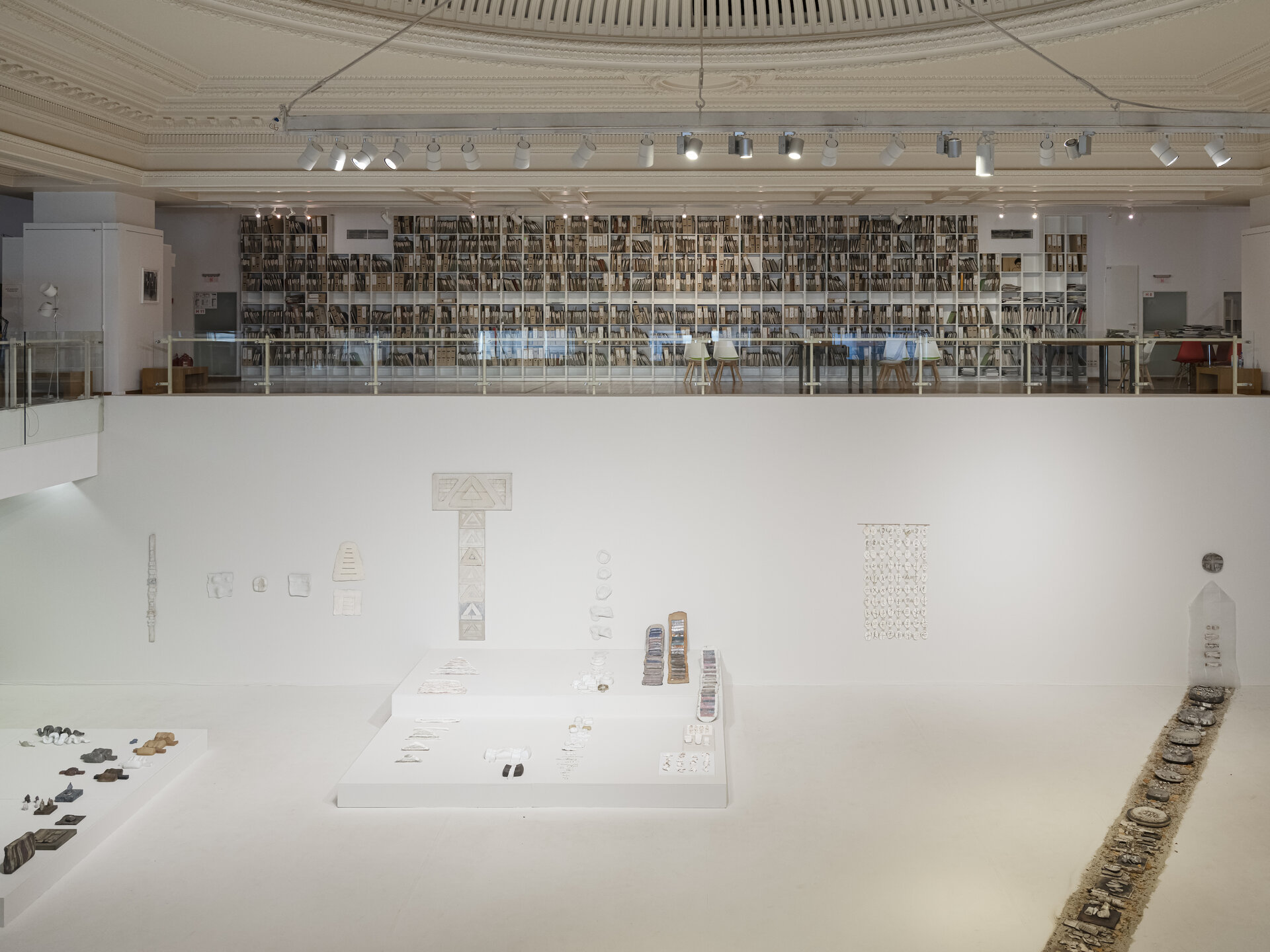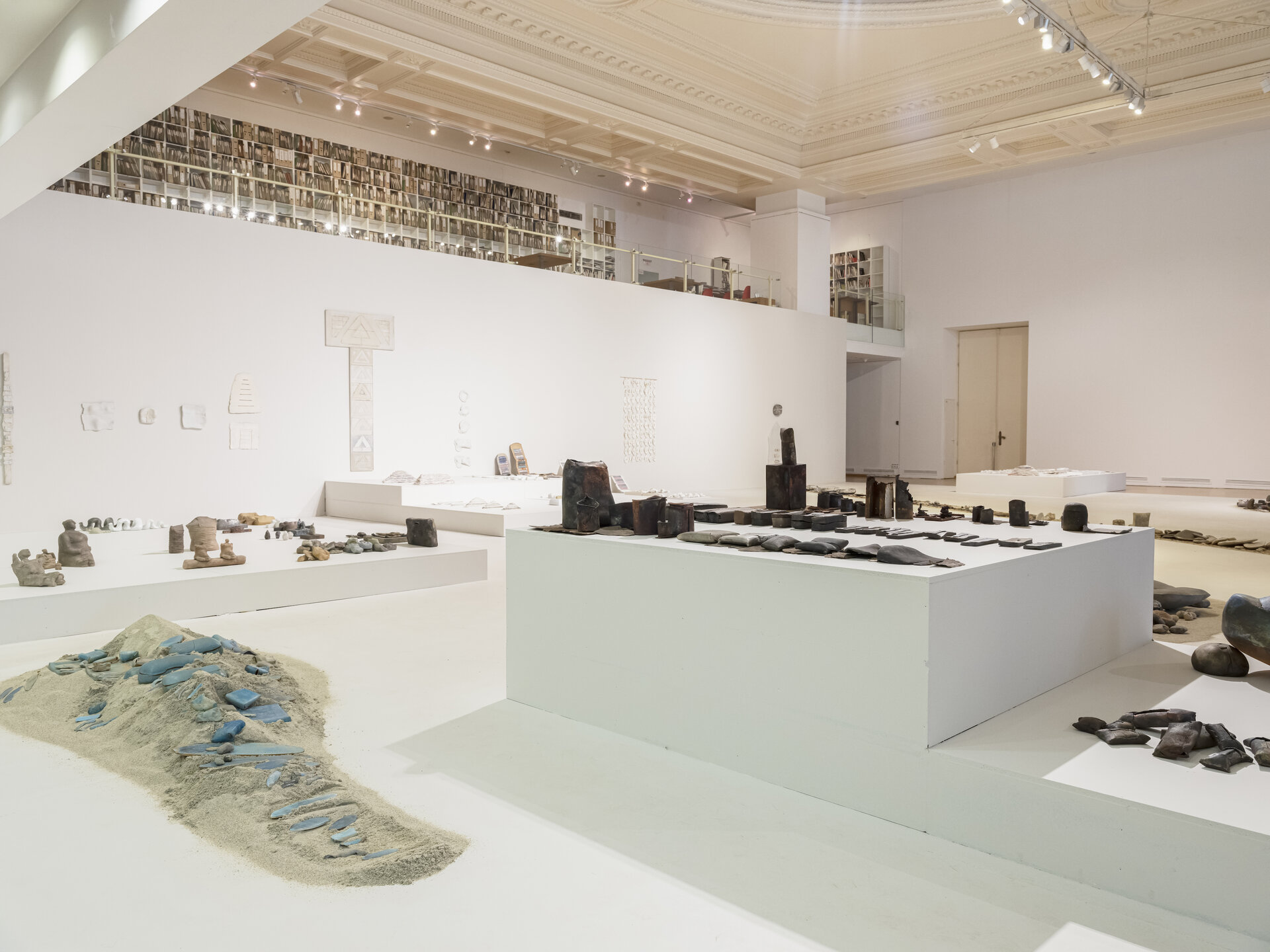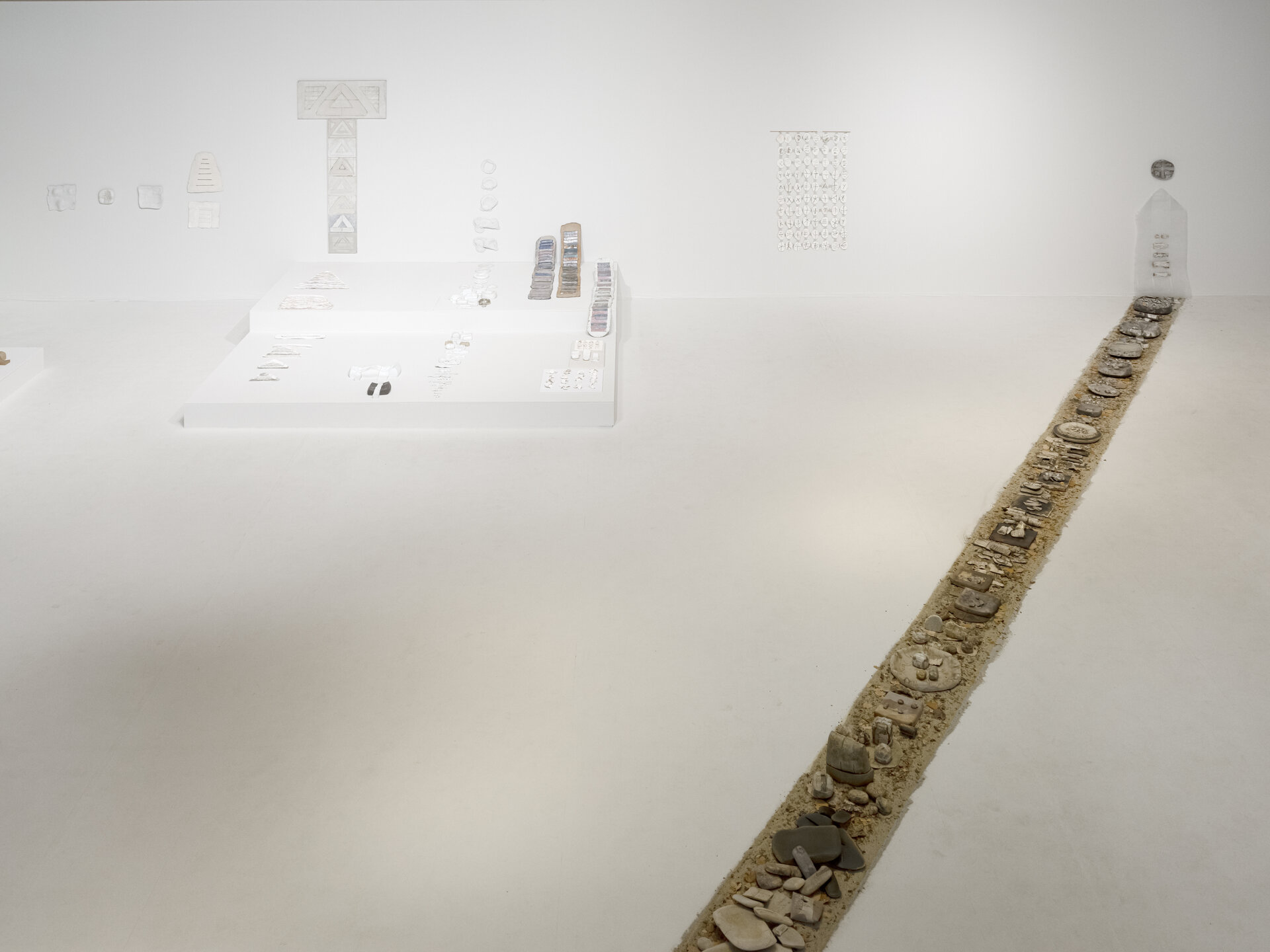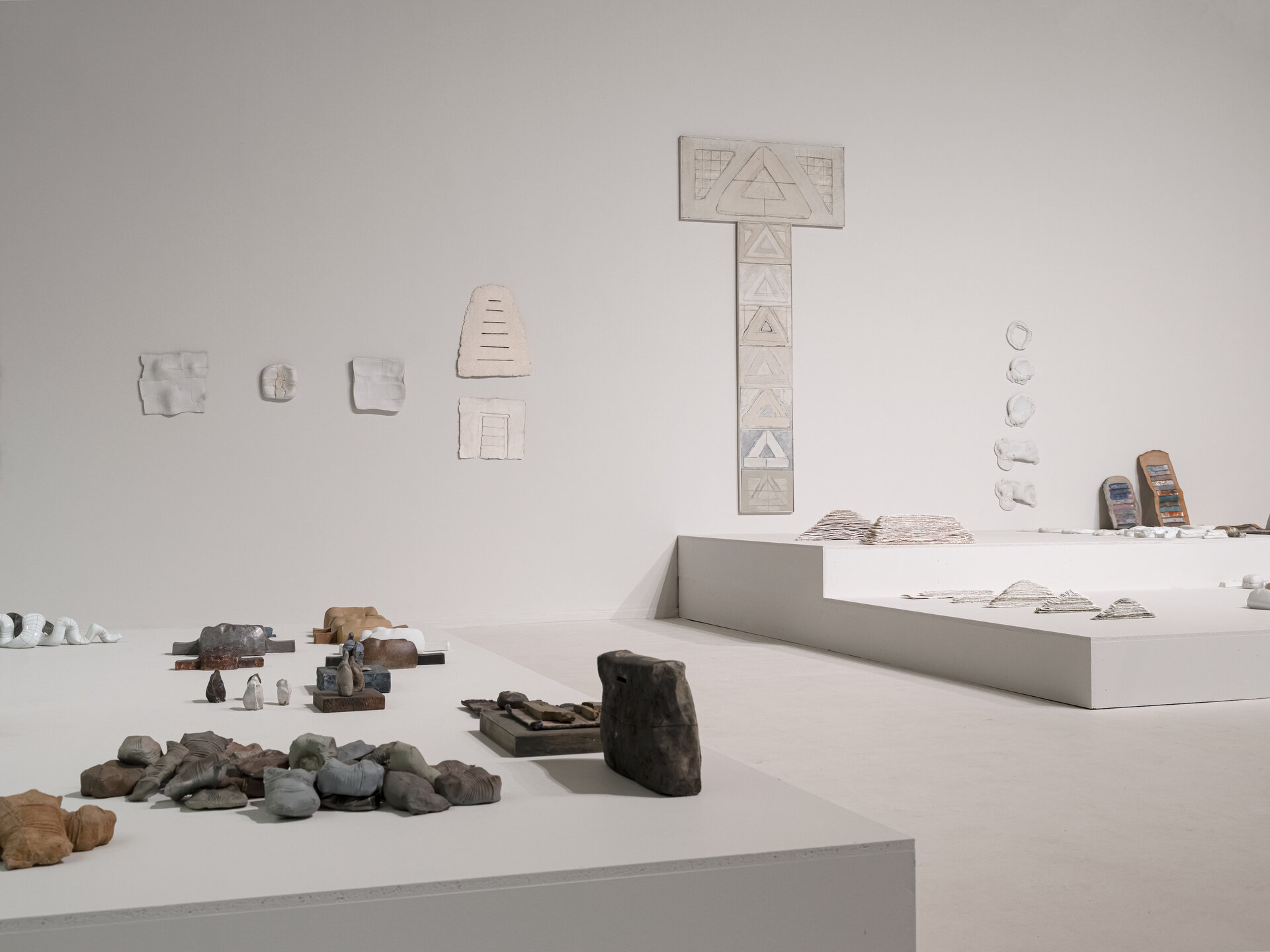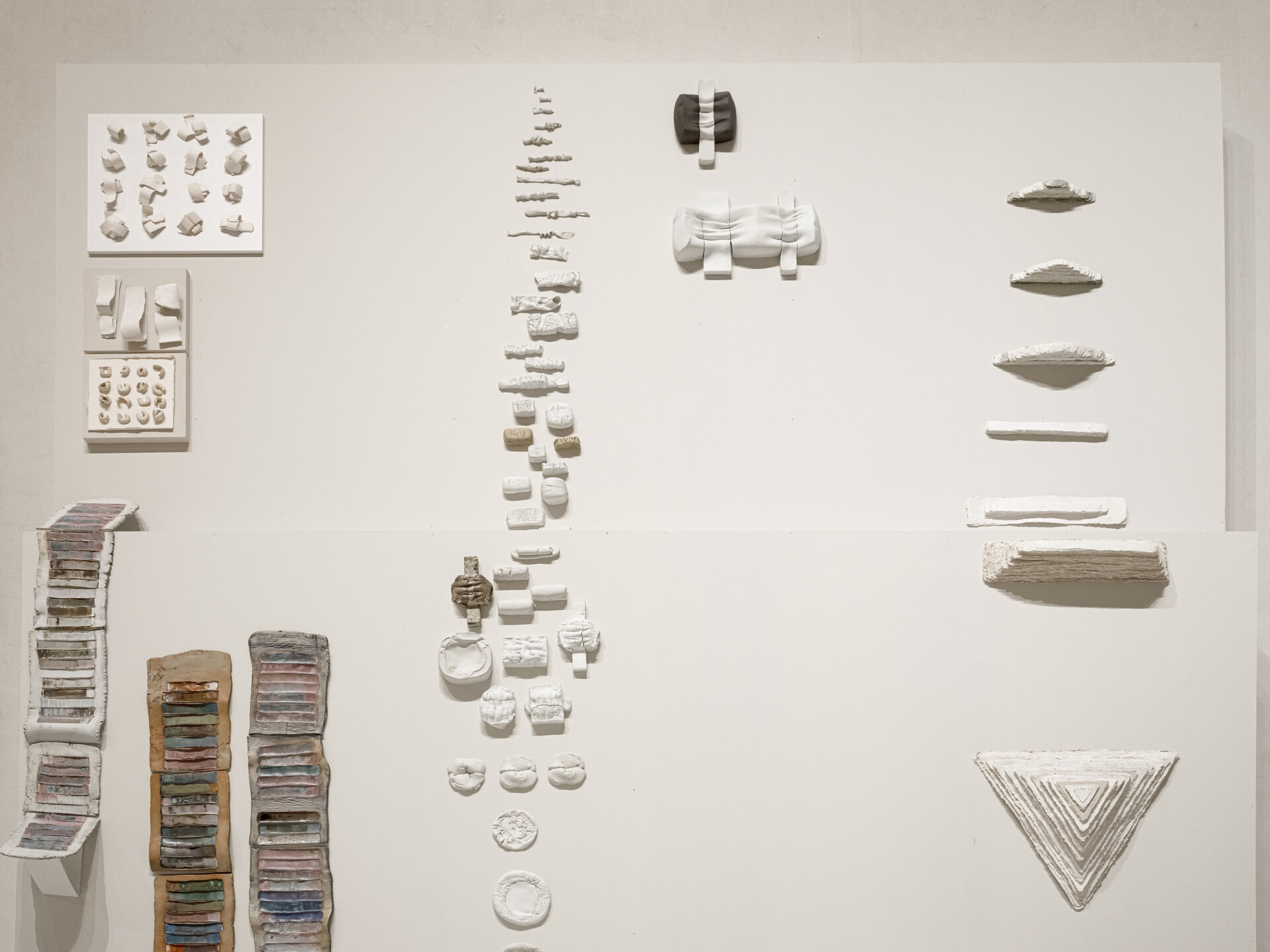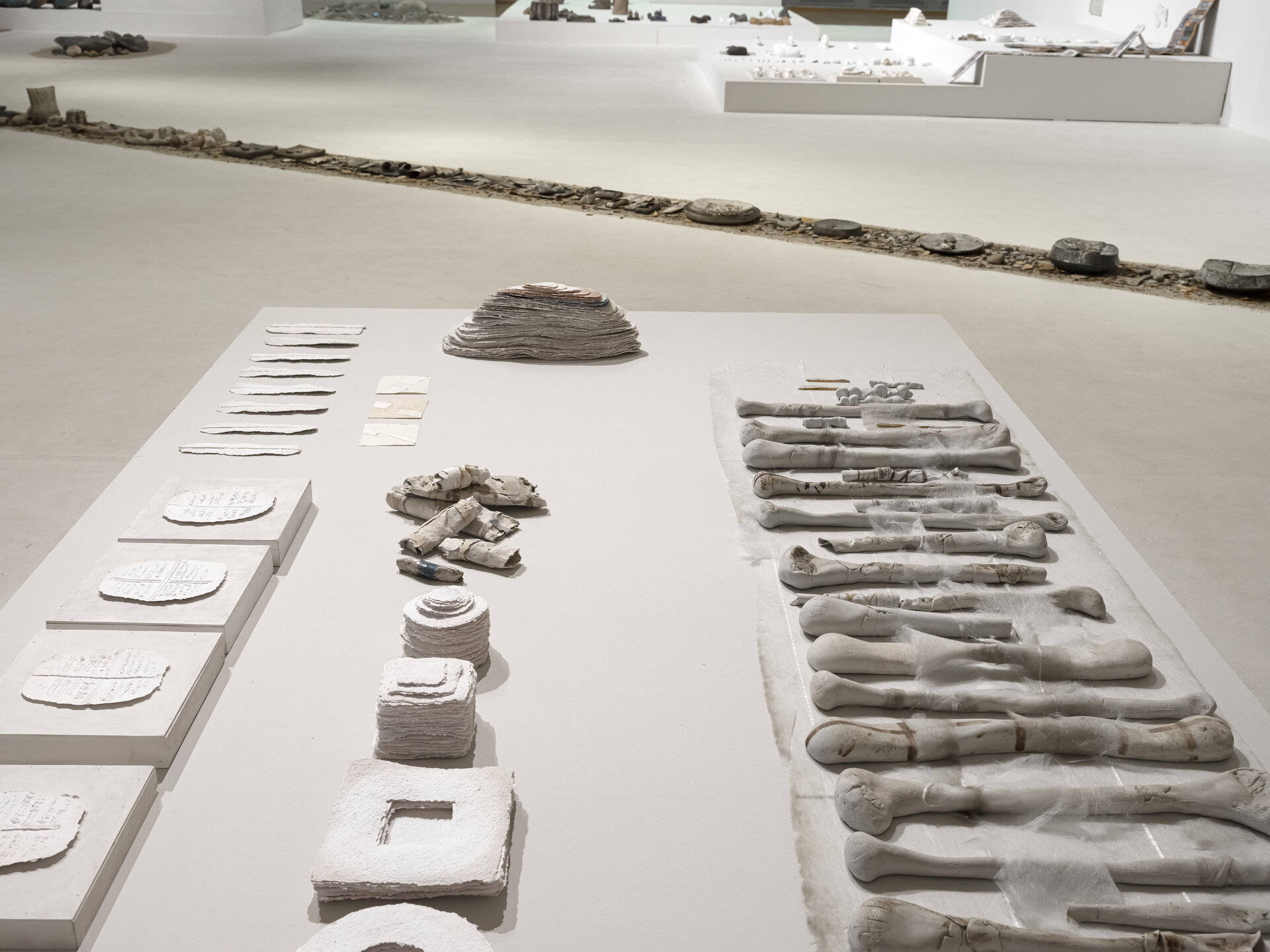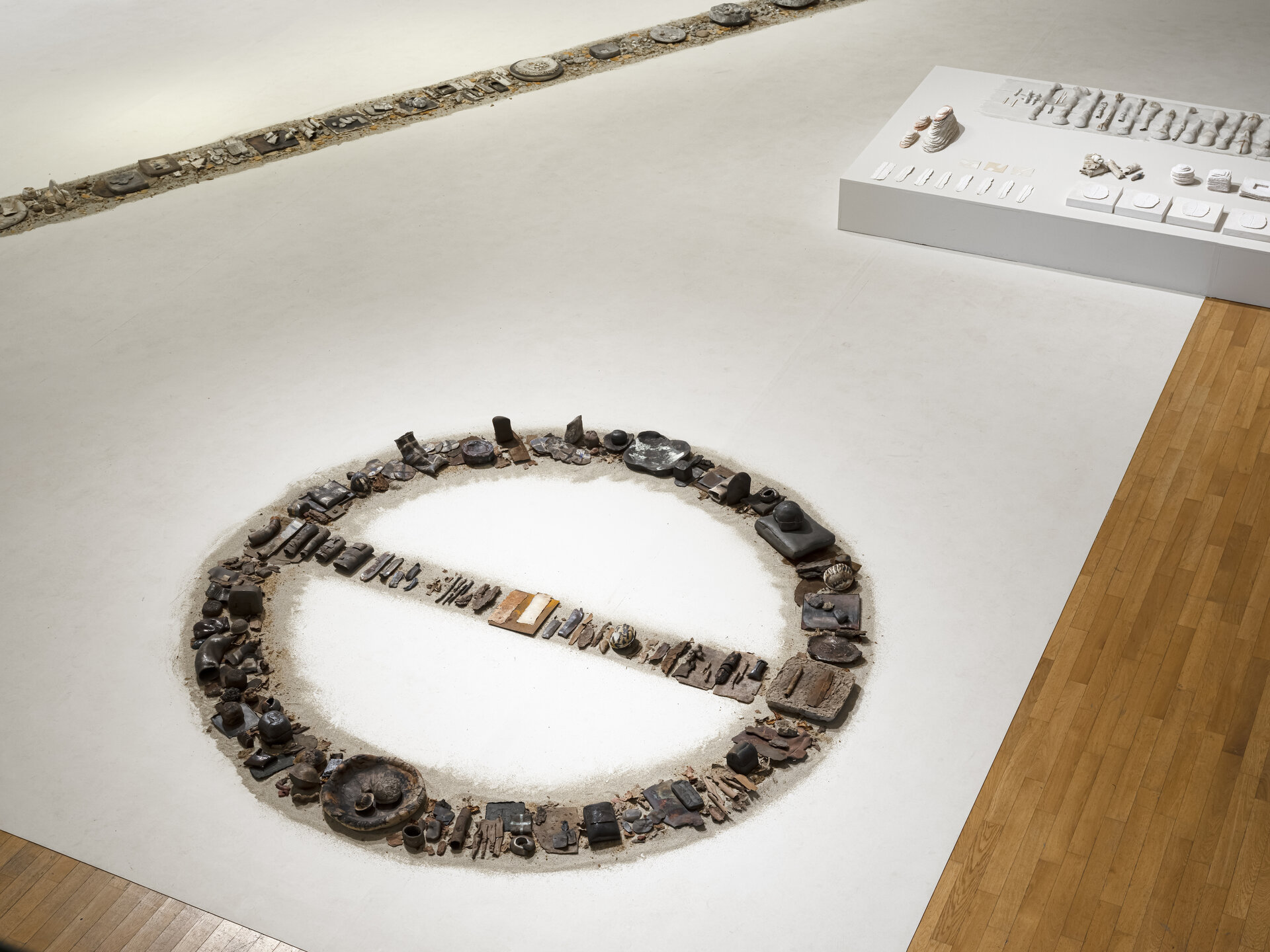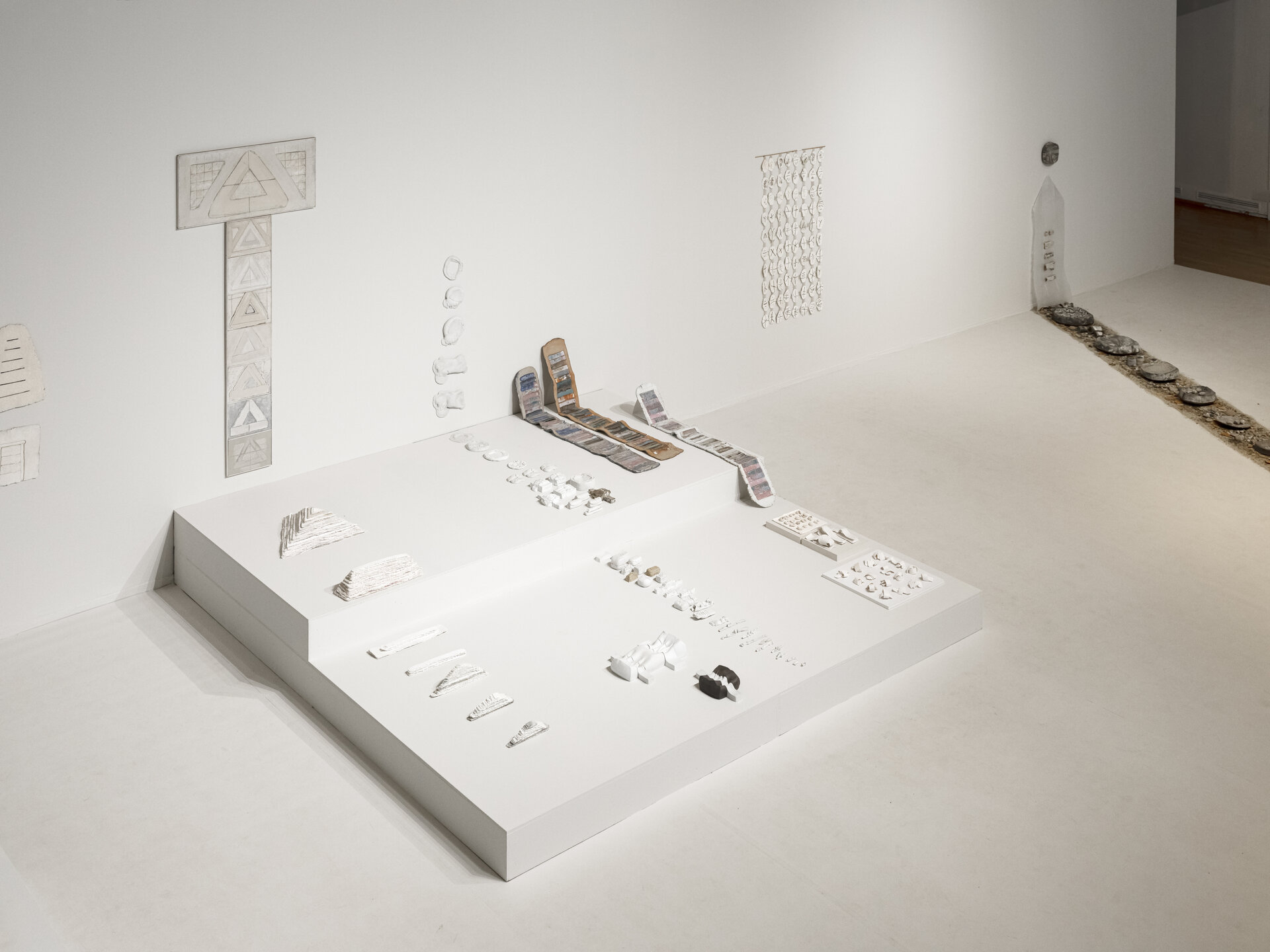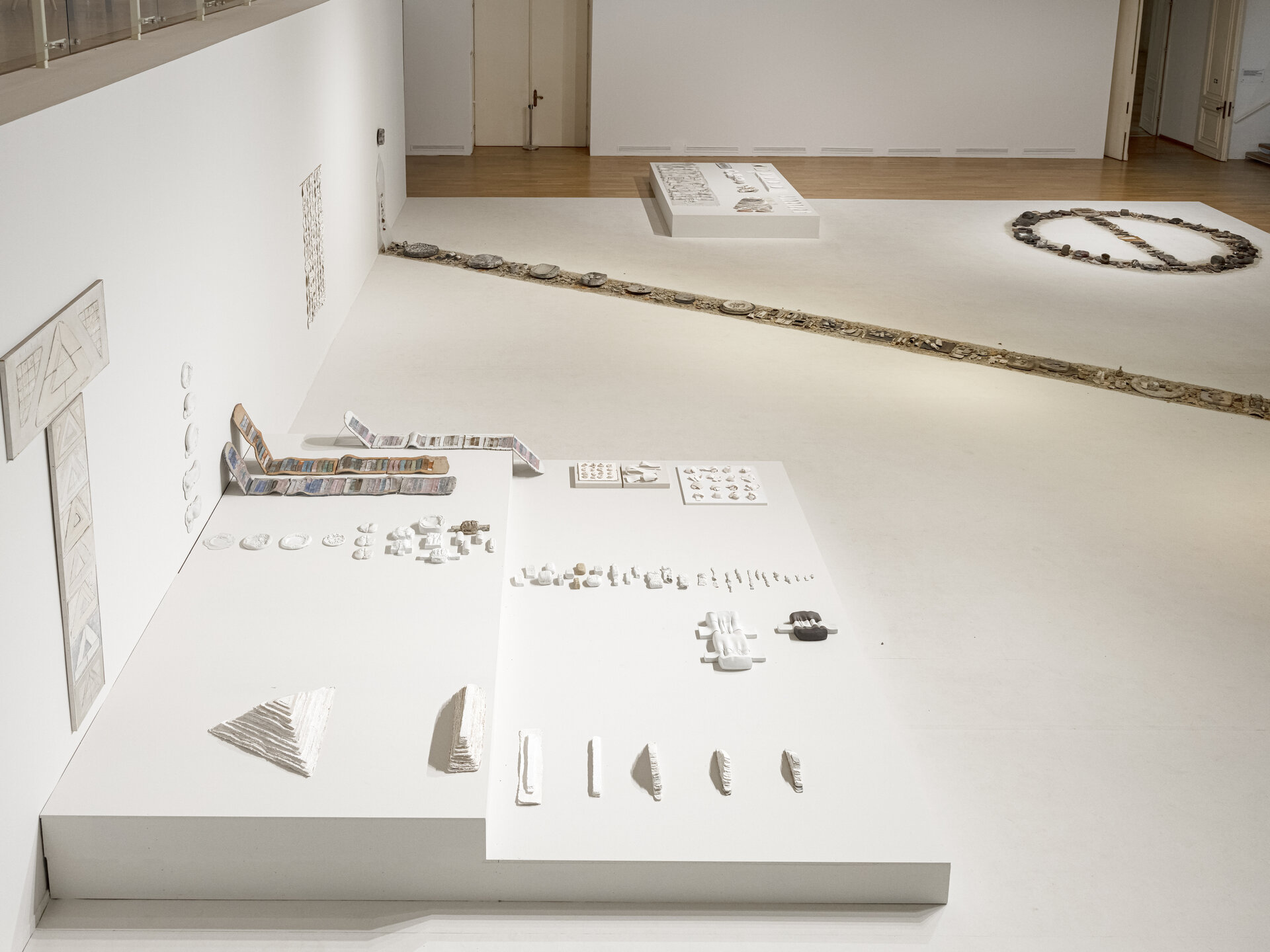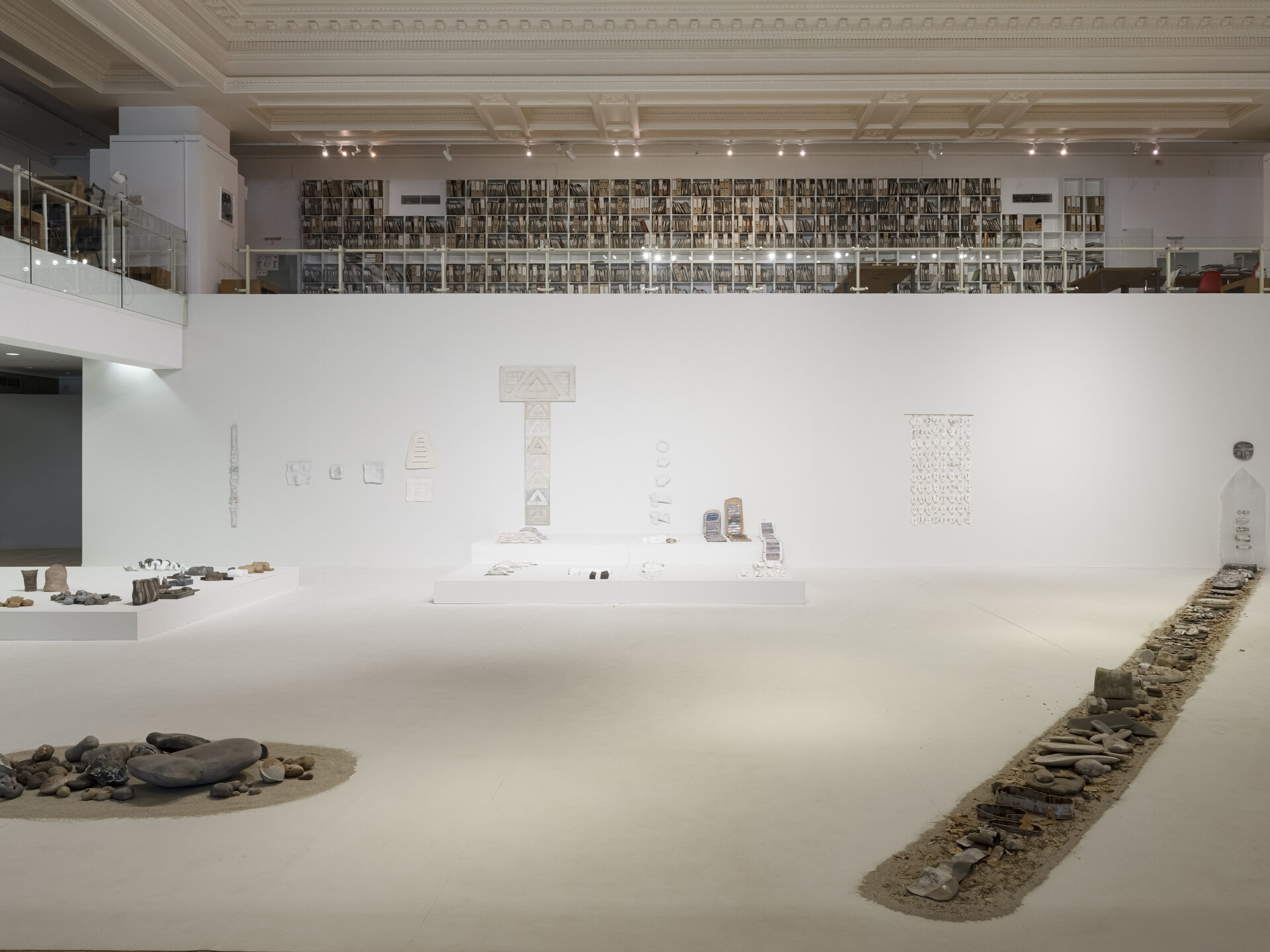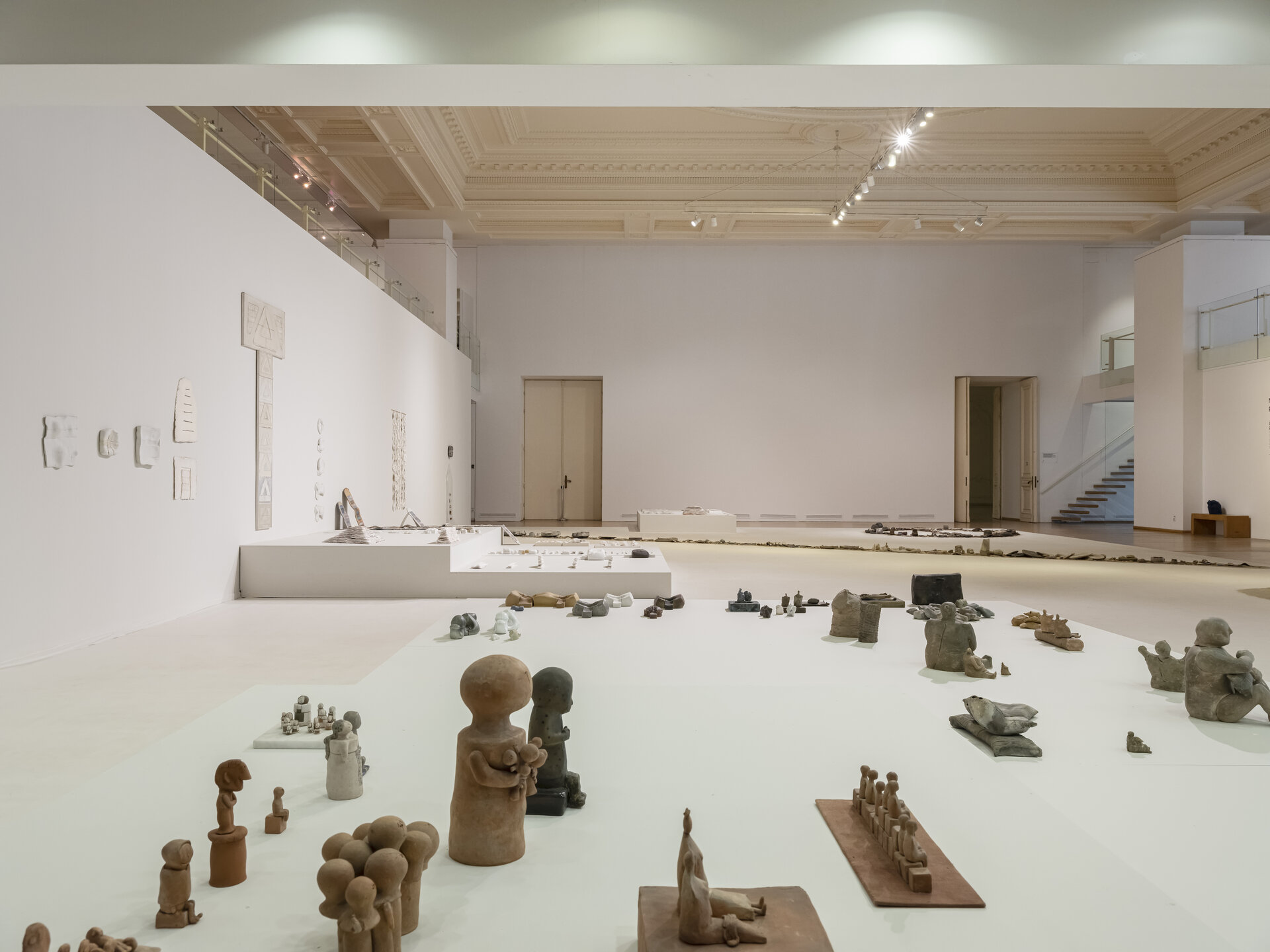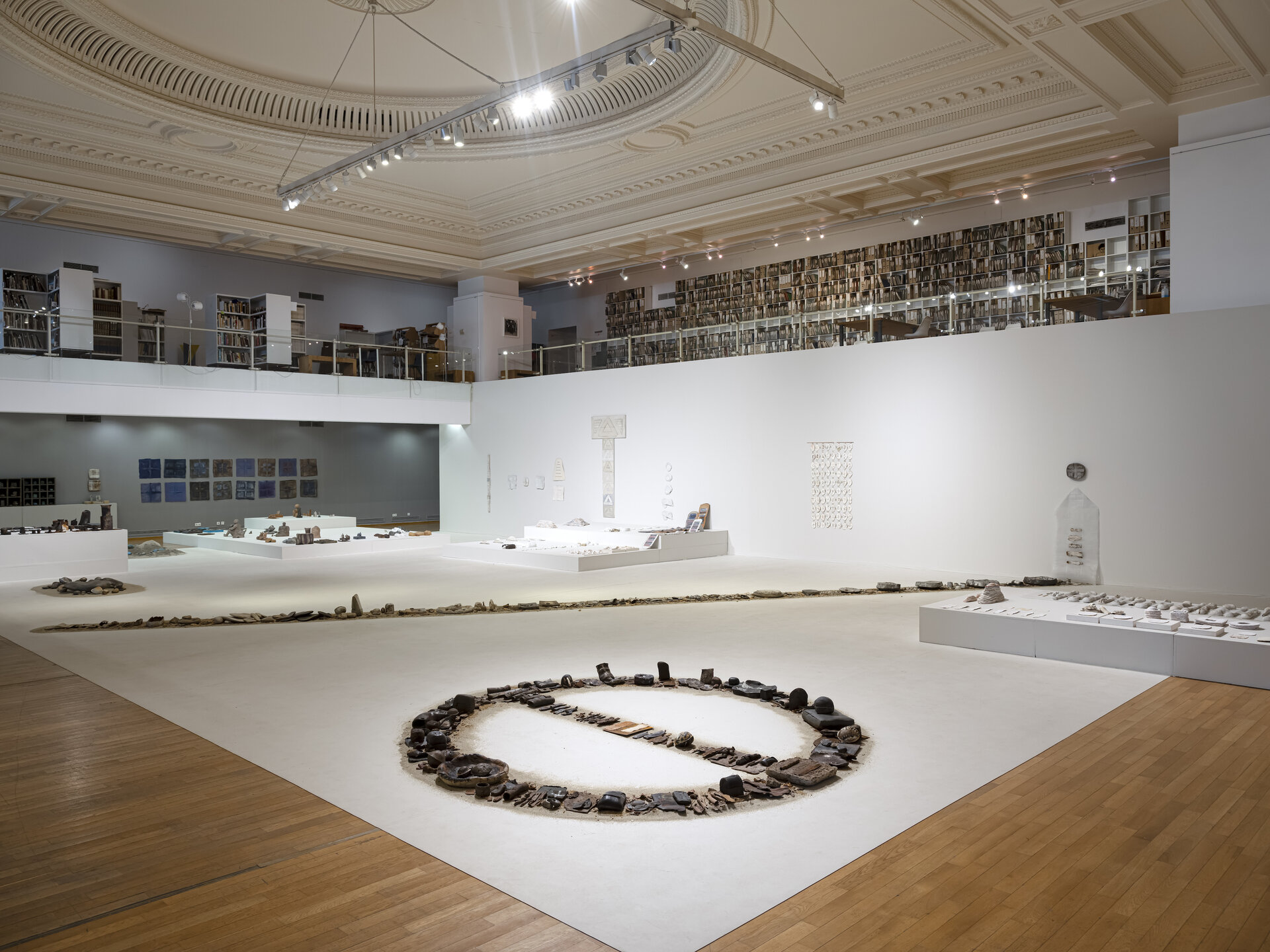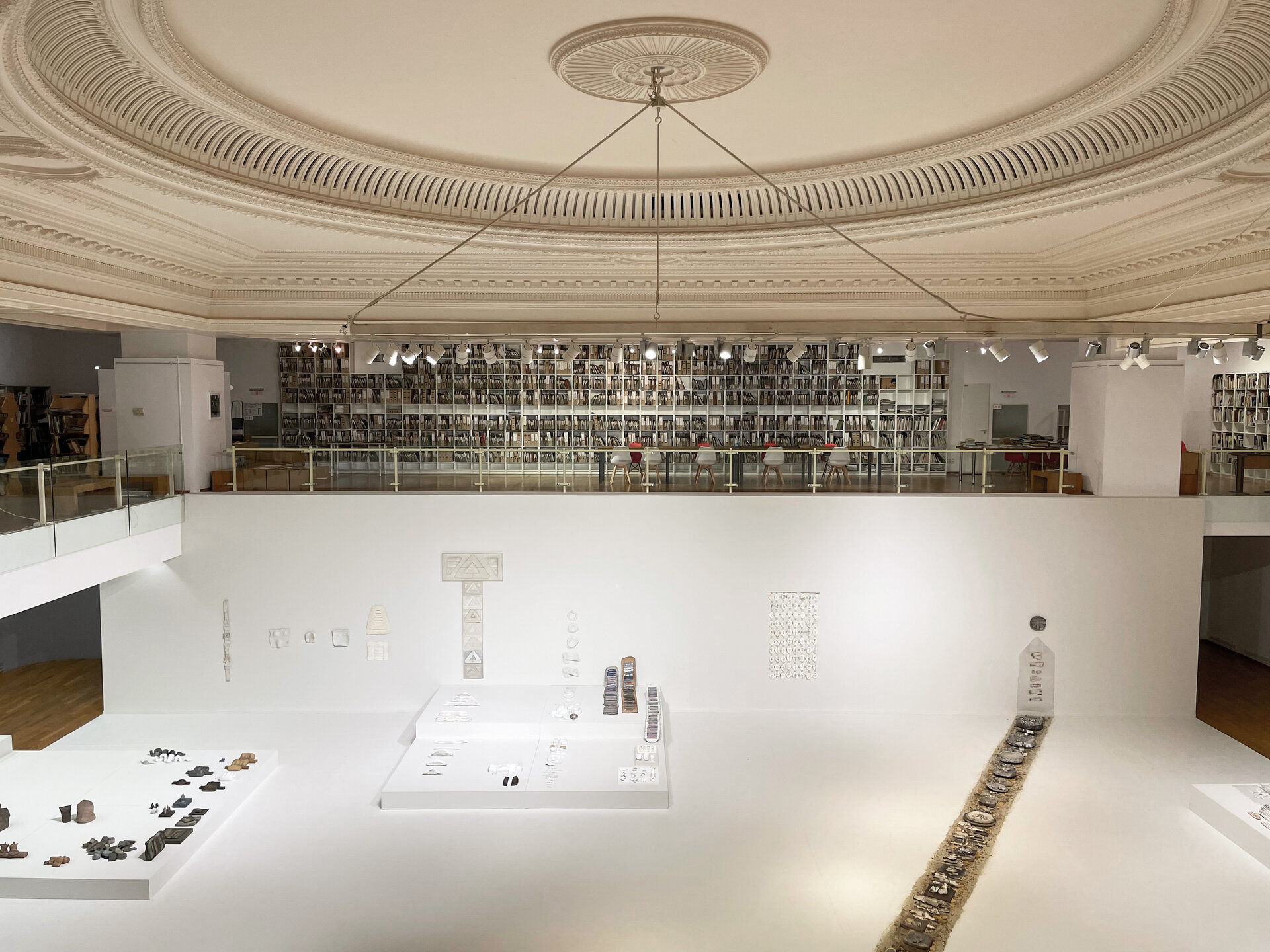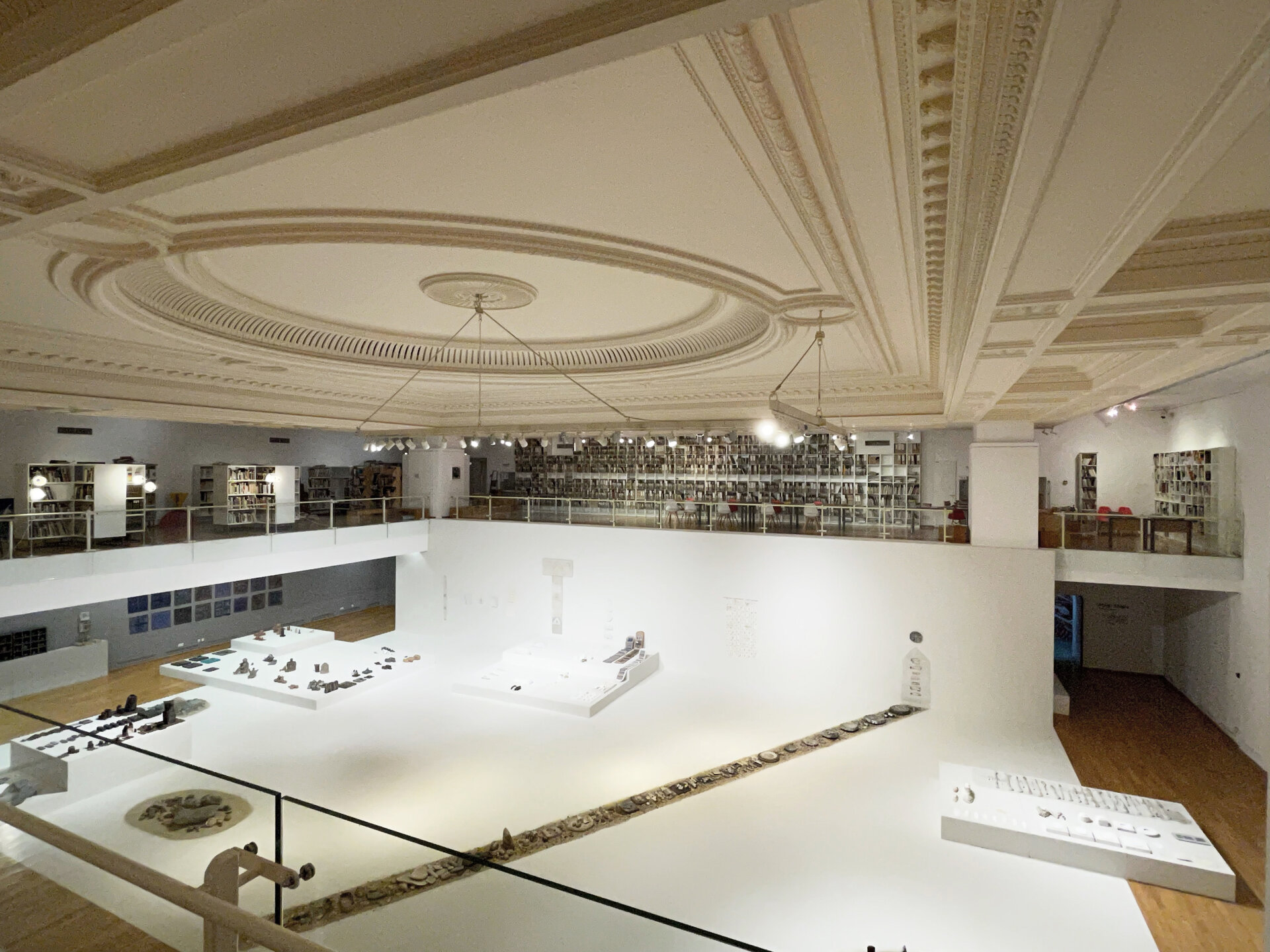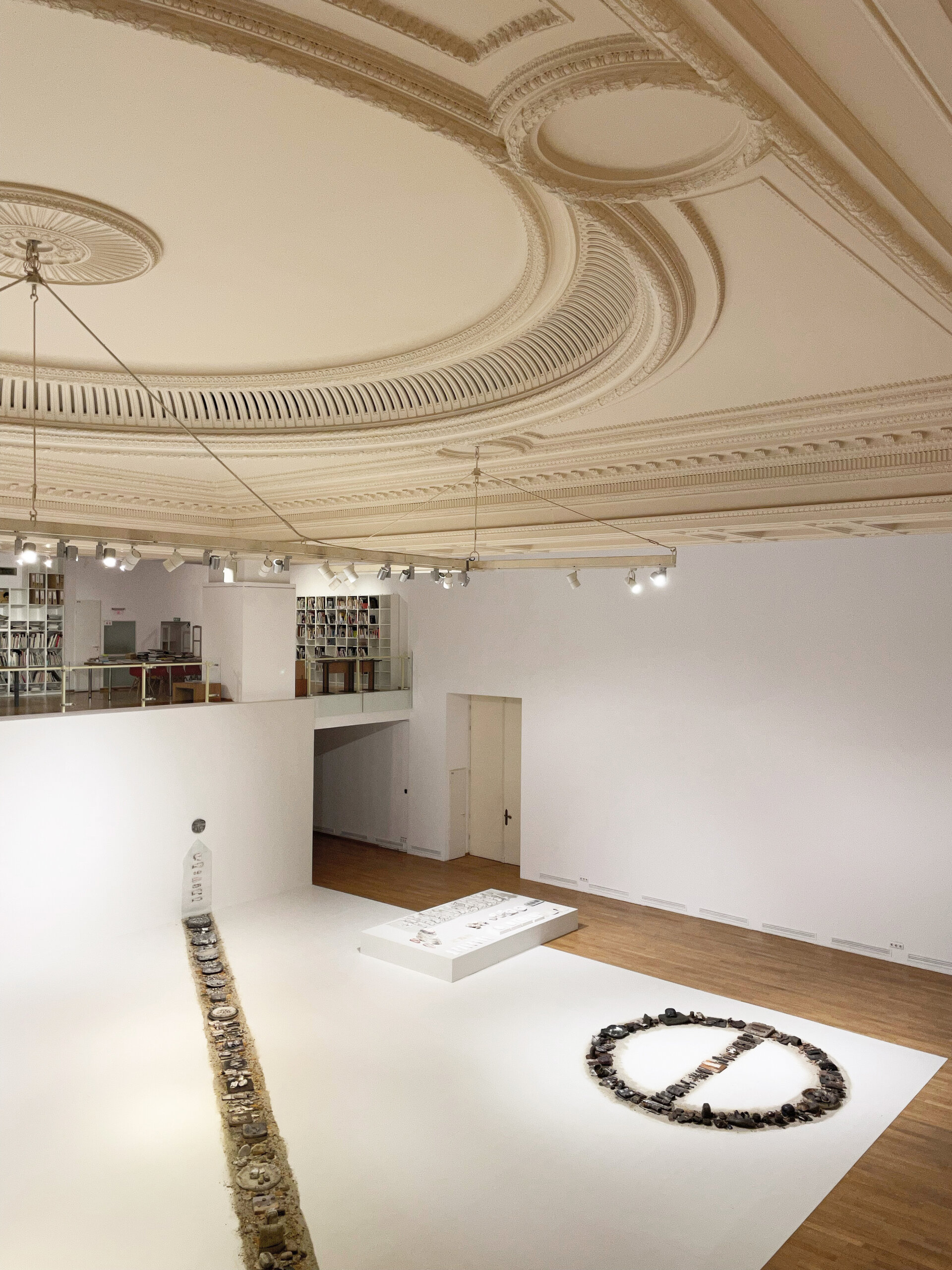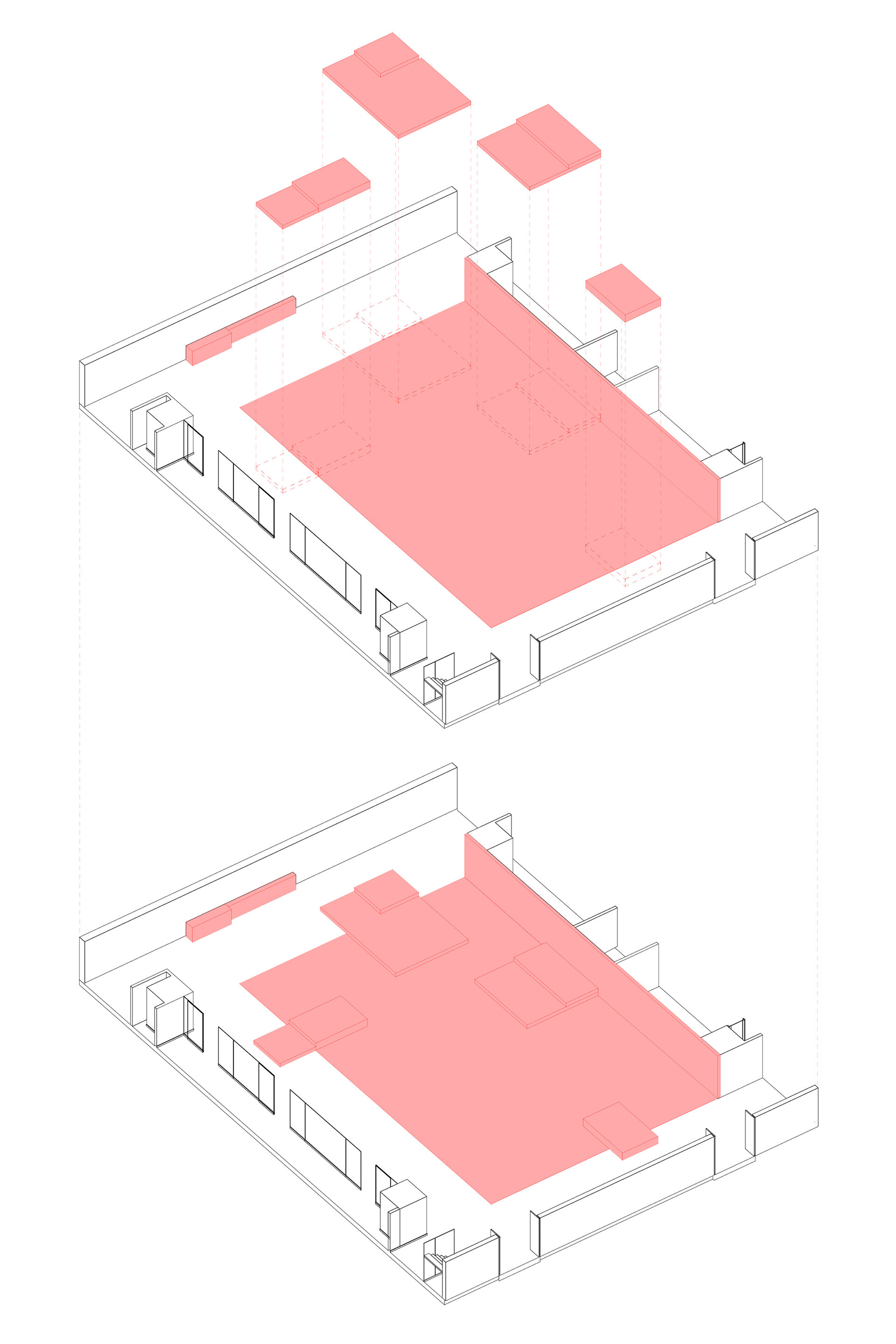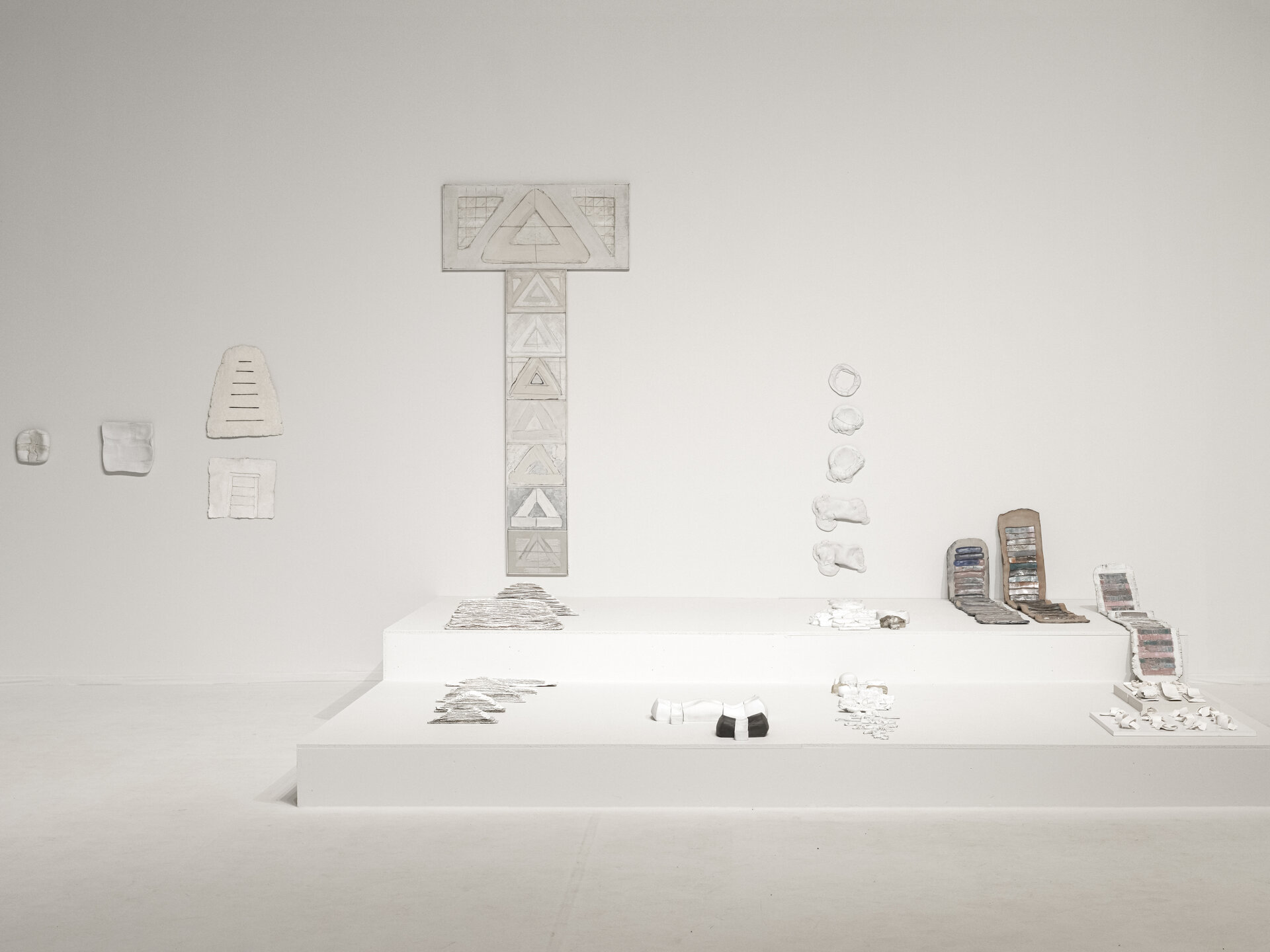
Márta Jakobovits / The Road Travelled / National Museum of Contemporary Art
Authors’ Comment
The Márta Jakobovits retrospective exhibition, held at the ground floor of the National Museum of Contempoary Art, showcases artworks from all of the main periods in her creation, starting with the fist series from the ‘60s and ‘70s to the most recent pieces, exhibited for the first time.
This space of the museum raises a lot of architectural problems, primarily because it has direct access from the entrance hall of the building and it also serves as the main distribution space for the rest of the museum. Another element, that leaves a deep mark on the heavily decorated space, is the open configuration between the ground floor and the mezzanine, which allows a frontal view of the museum's library, located on the mezzanine, an image that overlaps with the main exhibition wall. In this particular case, the main task of the exhibition architecture, in addition to mediating between the artistic concept - the curatorial concept - the works - the visitors, is also to create an intimate microcosm for the artworks. Inspired by the artist's experimental way of working, the proposed set offers a neutral background and brings the visitors into the heart of the artistic workshop and laboratory.
Márta Jakobovits' oeuvre is distinctive in the context of contemporary ceramics, as it parallels with one of the most complex researches on materials and techniques: from traditional, rediscovered and reinterpreted processes to experiments with the chemical reactions, burning temperatures and limitations of certain procedures. The permanent experiment results in ample, often ongoing series that are subject to constant shifting and reconfiguration.
Influenced by the artist's experiments with handmade paper and collage techniques, the architectural project of the exhibition brings together all the works on a large white sheet, which allows viewing the works both individually or overlapping. Thus, by uniting the main wall of the exhibition with the floor, transforming the space into a unitary white-cube, even the large-scale installations, which are related to the artist's land-art works, are unconstrained, and also the visitors become passengers in a world suspended in time, without being influenced by the monumental elements of the museum space.
- Exhibition Design in 2 parts: Romanian Design Week 2020 / Central Exhibition & Diploma 2020
- Three Sisters. An (Un)usually Free Script Based on Chekhov
- Diploma 2019. Exhibition of architecture, art and design university graduates
- Pavilion Untold - Hamza X BT
- Leviathan. In the guts of the collection. Transformation of the second floor of the National Museum of Contemporary Art
- Year One. First Year. Model / Vocabulary / Tools
- Beyond the legend. Neagoe Basarab
- “Herbarium” after “The Book of Plants and Animals” by Simona Popescu
- “Meerkats House” by David Drabek
- The Bucharest of Mircea Eliade
- The Modern Idol. Henry Moore in the Eastern Bloc
- “Journey by Moonlight” after Antal Szerb
- MLMSN_IZO
- Batthyaneum. Astro-stories and mechanical animations
- Coronation Festivitie
- L'Année dernière à Malmaison
- From near to far. Visual mappings of the 2 Mai and Vama Veche space
- Smoke Screens
- Space within space
- Bildfahrzeuge (Image Vehicles). A Peter Jacobi Retrospective / National Museum of Contemporary Art
- Volume of a sleep
- Márta Jakobovits / The Road Travelled / National Museum of Contemporary Art
- This Museum is for you!
